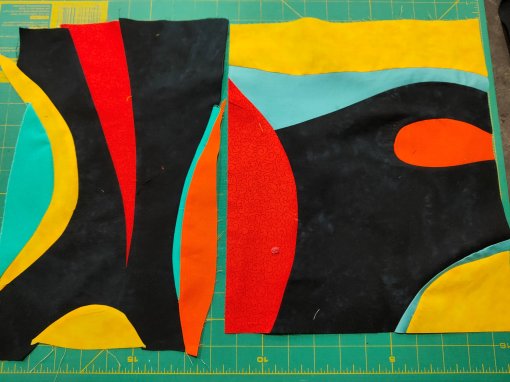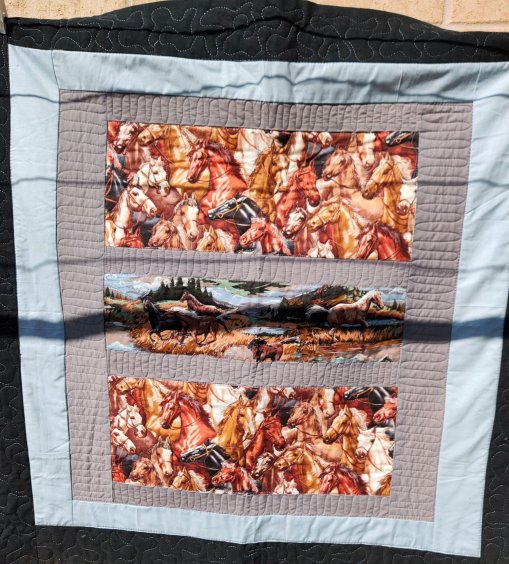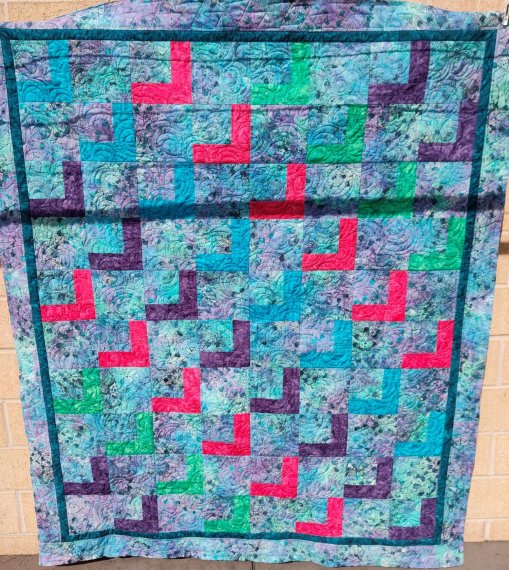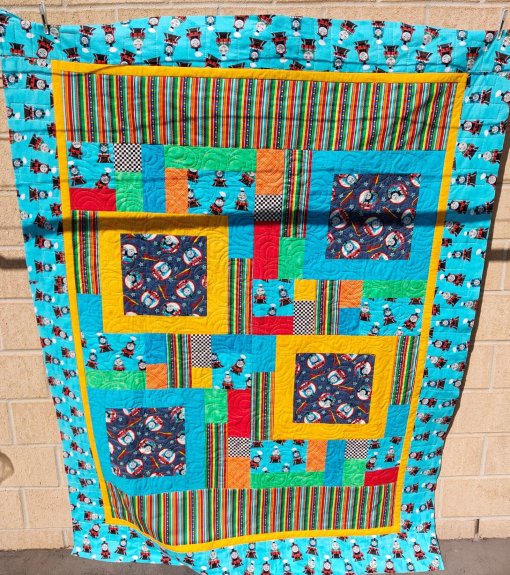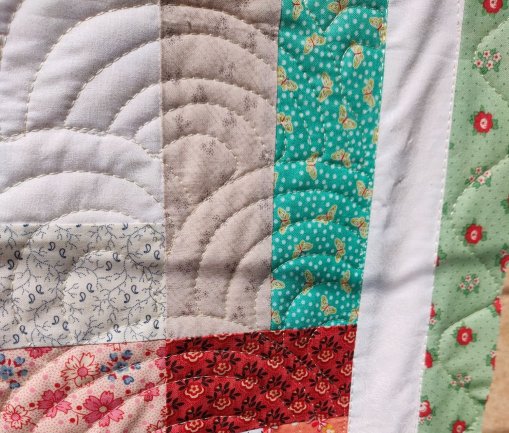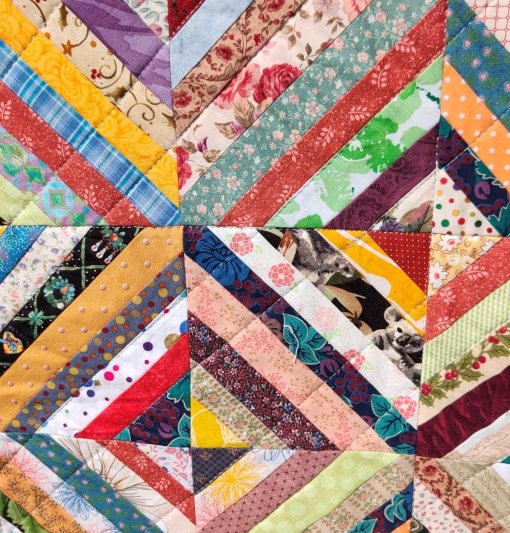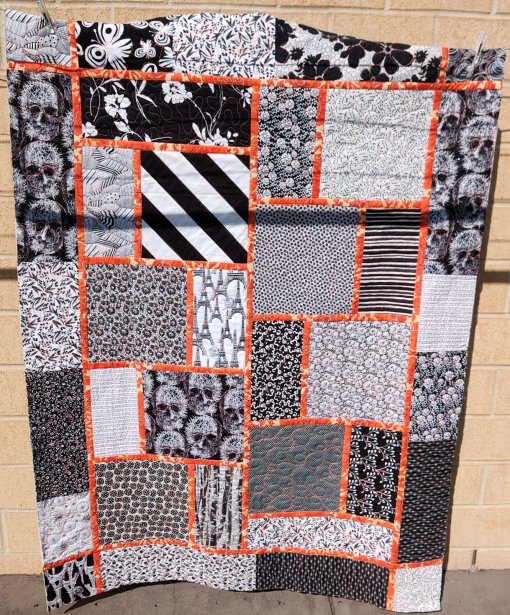I knew my sewing/quilting mojo would return eventually! I’ve been on two 4-day retreats this year and both times I’ve sewn.
July 2023 retreat
The first retreat was in July 2023, and I did some repairs to a jacket of my Dad’s so it would fit me, added the borders to a quilt top I started 2 or more years ago, made some bowl holders, made a set of 3 bags using fabric I’d created from scraps, and a zipped project folder. When COVID lockdowns were on, I did a class with Sheila Frampton-Cooper where I learned how to sew improvisational curves etc. I didn’t know what to do with the new pieces of ‘fabric’ I’d created, but when I decided to make the bags, that fabric seemed perfect for it. The pattern I used for the bags was Open Wide 2.0 from http://www.byannie.com (https://www.byannie.com/open-wide-2). I learned a lot about working with mesh, soft and stable, Wonder Clips, and zips. I learned even more about zips in the most recent retreat in October (below).
Some of the photos from the July retreat:
October 2023 retreat
In the most recent retreat, I ventured a bit further into bag making. Here’s a tip—if you find a locally handmade large fabric bag in a market for less than $100, the maker is LOSING a lot of money. Why? The cost of the materials (pattern, zips, soft and stable, mesh, fabric, bag hardware etc.) was well over $100 and that’s not counting the skills and labour involved (the travel bag alone took me 20+ hours to make, including several hours of prep time).
This time I made another set of 3 bags, a caddy for carrying stuff (e.g. for a baby, for yarn, for fabric, whatever… [https://www.byannie.com/catch-all-caddy-2]), and a large travel bag suitable as a carry-on (https://www.byannie.com/ultimate-travel-bag-2). All the patterns were from By Annie. And I also stabilised a grocery bag for my Mum that was starting to fall apart. I learned even more about zippers, particularly a useful trick for adding zipper pulls to a long length of zipper tape (I can buy it in 4 m lengths, with about 20 pulls in the packet, but NOT inserted onto the zipper tape. See below the photos for this trick!
Zipper tape and pulls
When you buy zipper tape by the metre, you have to add the zipper pulls yourself to create the zip. Fortunately, zipper tape and pulls for bag making are bigger than those for dressmaking, so it’s easier to work with them. And they have plastic teeth that make them easy to cut. There are YouTube videos on how to use a fork for adding a pull, but the technique I was shown doesn’t require any tools. The most important thing is that you have a length of tape that has at least one ‘good’ end—which is where the zipper part finishes and there’s just a fabric end (2 bits) with no teeth. Always preserve the good end and only cut from the other end.
The other critical bit of information is identifying the ends of the zipper pull, which is the bit (usually metal) that goes onto the tape and creates the zip. There are two ends—the flat end (the ‘bum’) and the pointy end (the ‘head’), and there’s the puller itself. You’re only concerned about the heads and bums! If the zipper tape is closed, then you start with the bum end of a pull; if it’s open, you start with the head end.
- Go to the good end of the zipper tape.
- Make sure the zipper tape is facing up (i.e. the teeth are facing you) and decide if you need to insert the puller bum first (if the tape is closed) or head first (open tape).
- For closed tape: Make sure the zipper pull is also facing up. Insert the good ends of the tape into the flat (bum) end of the pull until they won’t go any further. Hold the two good ends and split them apart—this should open the zipper and force the pull down the zip. You now have an open good end, so it’s time for the head end.
- For open tap: Again, make sure the zipper tape and pull are facing up. Insert the head end of the next pull into the open good ends until it won’t go any further, then hold the good end and push the zipper pull down the tape. This will close the tape and you’re ready to insert another bum end of a pull.
- Add as many of these as you want (I added all 20 pulls, just moving each further down the 4 m length of zipper tape).
- When you ready to cut your zipper tape to length, make sure there is at least one pull along that length (some bags require 2), and ONLY CUT from the non-good end. Always preserve the good end as that’s the only thing that makes this technique easy.

























